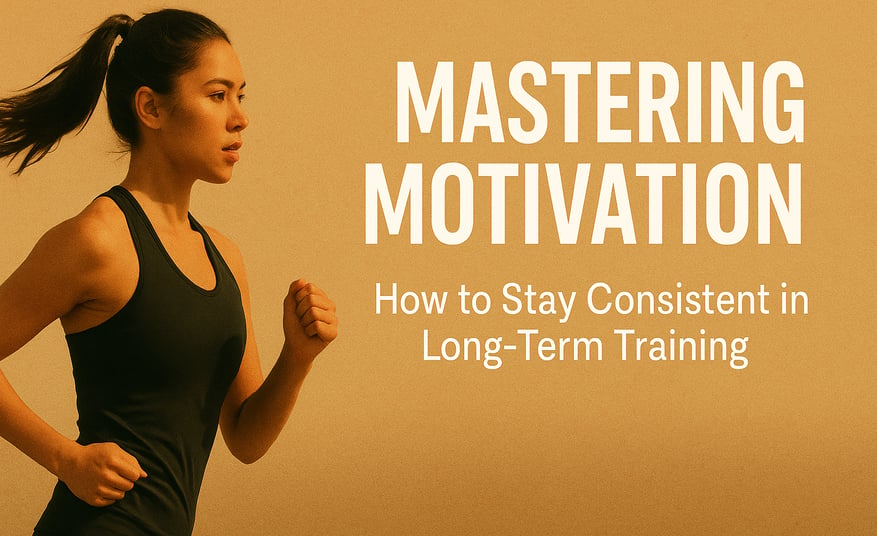Mastering Motivation: How to Stay Consistent in Long-Term Training
Discover how intrinsic motivation, habit science, and mindset tools like Atomic Habits and The Obstacle Is the Way help you train with consistency and purpose.
5/9/20252 min read


The Psychology of Motivation in Long-Term Training
-How to Build a Mindset That Lasts Beyond the First Few Weeks
Sticking to a training routine sounds simple — until life starts throwing curveballs. One skipped day turns into three. A cold derails your momentum. A stressful week kills your vibe.
Motivation comes and goes. That’s why long-term success in training isn’t about hype — it’s about building habits, identity, and mindset.
In this article, we’ll explore the psychology behind lasting motivation, the science of habit formation, and tools to help you build a stronger foundation for consistency and discipline.
- Intrinsic vs. Extrinsic Motivation: What Actually Drives You?
Psychologists divide motivation into two categories:
Extrinsic motivation comes from outside forces — like rewards, appearance goals, or social approval.
Intrinsic motivation is internal — driven by enjoyment, challenge, growth, or a sense of purpose.
Most of us start training from an extrinsic place: “I want to lose 10 pounds,” or “I want to look good for summer.” That’s fine. But these motivations often fade when stress hits or life gets busy.
Long-term adherence — the kind that sticks for years — comes from shifting into intrinsic motivation. When movement becomes part of your identity, when training becomes how you clear your head or sharpen your focus, you stop relying on hype and start relying on purpose.
A 2016 study in Health Psychology Review found that intrinsic motivation is more strongly correlated with long-term exercise adherence than any external incentive.
-The Obstacle Is the Way
A mindset reset. Ryan Holiday’s book teaches how to stay consistent and composed when life throws obstacles in your path.
[View on Amazon]
-Habit Formation: The Science of Doing It Without Thinking
Motivation helps you start. Habits keep you going.
The key is to make working out feel automatic — just like brushing your teeth.
According to research from the European Journal of Social Psychology, the average time to form a new habit is 66 days — not 21. And the more complex the behavior, the longer it can take.
Habits are built in 3 parts:
Cue (the trigger): e.g., setting out your gym clothes the night before
Routine (the behavior): e.g., working out first thing in the morning
Reward (the payoff): e.g., the post-workout high, momentum, or progress
Your goal is to set up a system where these habits don’t rely on “feeling like it.” They just happen.
-Habit Tracker Journal
Simple, effective. Use it to track workouts, routines, and small wins. Build proof and momentum.
[View on Amazon]
- Long-Term Thinking = Long-Term Gains
One of the biggest shifts you can make is dropping the “all or nothing” mindset.
Missed a workout? That’s okay. Get back in.
Progress slow this week? Still showing up = still winning.
Sustainability means building systems, not chasing motivation.
-Atomic Habits
The blueprint. James Clear breaks down how tiny habits lead to long-term results.
[View on Amazon]
-Final Thoughts: Motivation Fades, Identity Lasts
You won’t always feel inspired. You won’t always be in the mood to train.
That’s why you need structure, systems, and inner reasons that go beyond the mirror.
Start with your “why,” build repeatable routines, and give yourself tools that reinforce your mindset. Over time, motivation won’t even be the issue — showing up will be who you are.
FITNESS
Nutrition
WellnesS
info@movebetterco.com
© 2025. All rights reserved | Privacy Policy | Terms & Conditions